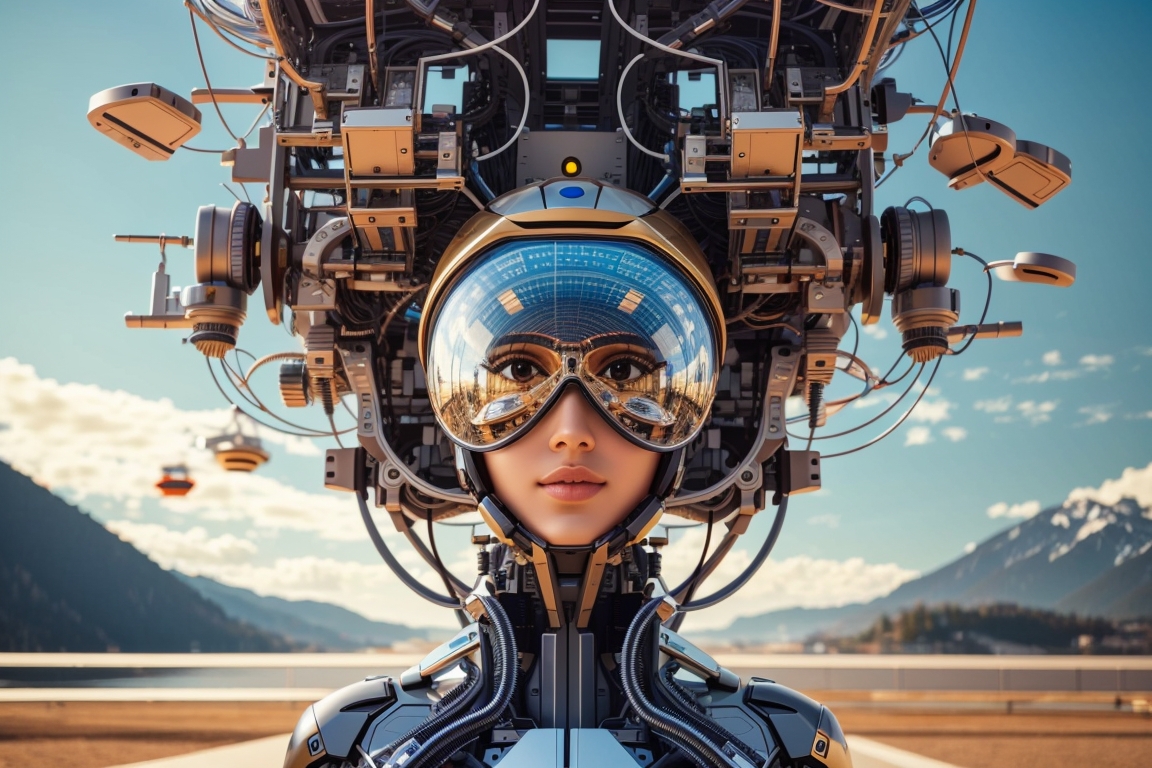
In an era driven by visual communication, the use of artificial intelligence (AI) image generators has revolutionized the way we create visual content. These tools have made it easier than ever to produce eye-catching visuals for various purposes. However, with great power comes great responsibility, and in this article, we will explore the ethical considerations surrounding the use of AI image generators for visual content creation.
Understanding AI Image Generators
How AI Image Generators Work
AI image generators leverage advanced algorithms to automatically create visual content. They can analyze data and context, generating images, graphics, and even videos that are nearly indistinguishable from those crafted by human designers.
The Benefits of AI-Generated Visual Content
The advantages of AI-generated visual content are evident: it's cost-effective, time-efficient, and can handle high volumes of work. This technology has transformed visual marketing, making it accessible to businesses of all sizes.
The Ethical Concerns
While the use of AI image generators offers numerous benefits, it also raises ethical concerns, which we will explore in the following sections.
Ethical Considerations
Originality and Attribution
One of the primary ethical considerations is ensuring the originality of AI-generated visuals. Proper attribution and acknowledgment of AI-generated content sources are vital to maintain the integrity of the creative process.
Avoiding Deception
Transparency is key. Visual content consumers have the right to know whether the content they're viewing was generated by AI or created by human designers. Misleading audiences can erode trust.
Inclusivity and Diversity
AI systems can inadvertently perpetuate biases or exclude certain groups if not properly trained. Ethical content creation should prioritize inclusivity and diversity in visual content.
Quality Control
Reviewing AI-Generated Visuals
Quality control is essential. AI-generated visuals should go through a thorough review process to ensure they meet the intended standards and avoid errors or inaccuracies.
Adding a Human Touch
Human designers and editors play a crucial role in refining AI-generated visuals, adapting them to brand aesthetics, and ensuring they align with the desired tone and style.
Ensuring Accuracy
Accuracy is paramount in visual content. AI-generated visuals should be fact-checked to prevent the dissemination of false information.
Legal Implications
Copyright and Licensing
The use of AI image generators can inadvertently lead to copyright infringement if the generated visuals closely resemble copyrighted material. Understanding intellectual property laws and licensing is essential.
Compliance with Intellectual Property Laws
Compliance with intellectual property laws, such as trademarks and copyrights, is critical when using AI-generated visuals. Violations can result in legal consequences.
Responsible AI Usage
Setting Ethical Standards
Businesses and content creators should establish ethical standards for the use of AI-generated visuals, including guidelines on originality, accuracy, and transparency.
Regular Monitoring and Updates
Regular monitoring and updates of AI-generated visuals are necessary to ensure compliance with ethical standards and to address any issues promptly.
Balancing Efficiency and Ethics
Pros and Cons of AI in Visual Content
Balancing efficiency and ethics can be challenging. While AI offers speed and scalability, ethical considerations should not be compromised.
Finding the Right Balance
The key is to find the right balance between AI and human input. AI should enhance productivity, not replace human creativity and judgment.
Case Studies
To gain a deeper understanding of the ethics of AI-generated visual content, let's examine a few case studies that highlight both ethical and unethical practices in the industry.
AI-Generated Visuals and Brand Trust
The Impact on Brand Reputation
The use of AI-generated visuals can impact brand reputation significantly. Maintaining ethical standards in visual content creation is crucial for building and maintaining trust with your audience.
The Role of Human Oversight
Why Human Input Is Essential
Human oversight is indispensable in ethical visual content creation. Humans provide the creativity, judgment, and empathy that AI lacks, ensuring content aligns with brand values.
Ensuring Ethical Visual Content
Human designers and editors play a critical role in ensuring that AI-generated visual content maintains ethical standards throughout the content creation process.
Industry Guidelines
Overview of Existing Guidelines
Numerous industry-specific guidelines provide valuable insights into ethical content creation with AI. Familiarize yourself with these standards and incorporate them into your visual content creation process.
Evolving Ethical Standards
The Changing Landscape of AI Ethics
AI ethics is a dynamic field. Staying updated with the latest developments in AI ethics ensures your visual content creation practices remain aligned with the most current standards.
Conclusion
In conclusion, the use of AI image generators has redefined visual content creation. However, using them ethically is essential to maintain trust with your audience and adhere to legal standards. By following the guidelines outlined in this article, you can create visual content that is not only efficient but also ethical.
FAQs
-
What are AI image generators?
AI image generators are tools that use artificial intelligence to automatically create visual content, such as images, graphics, and videos. -
How can I ensure ethical visual content creation with AI?
To ensure ethical visual content creation with AI, always review and edit AI-generated visuals, maintain transparency with your audience, and follow industry-specific guidelines for ethical standards. -
What legal issues should I consider when using AI-generated visuals?
Legal considerations include copyright infringement, intellectual property rights, and compliance with licensing and trademark laws. -
Can AI-generated visuals impact brand trust?
Yes, the ethical use of AI-generated visuals can enhance brand trust, while unethical practices can erode trust and credibility. -
Should AI-generated visual content always be reviewed by humans?
Yes, human oversight is crucial to ensure AI-generated visual content meets ethical and quality standards. Human input adds creativity, judgment, and accuracy to the content creation process.

